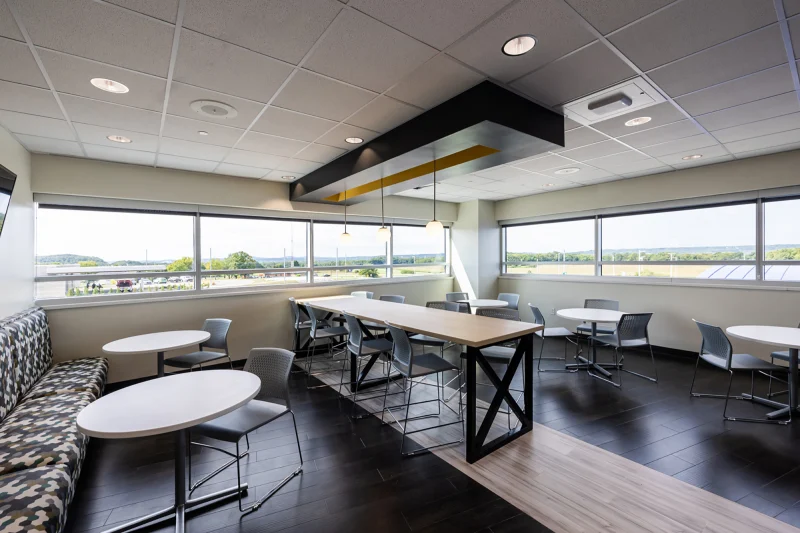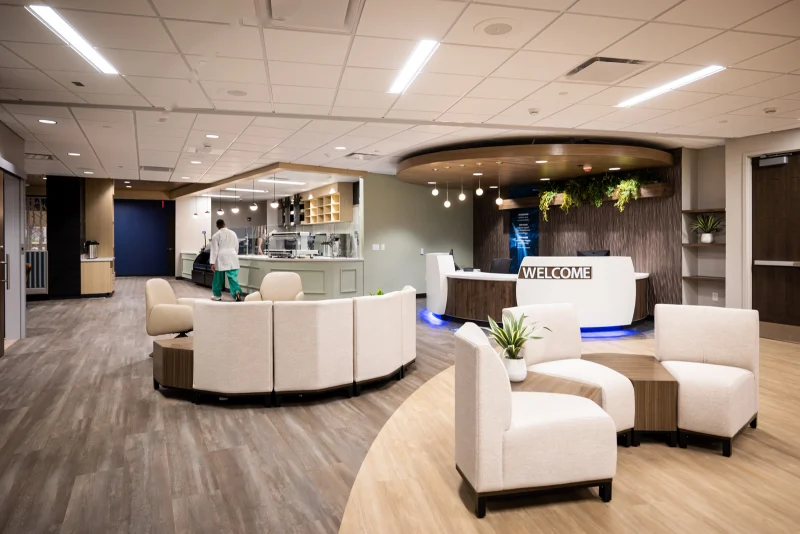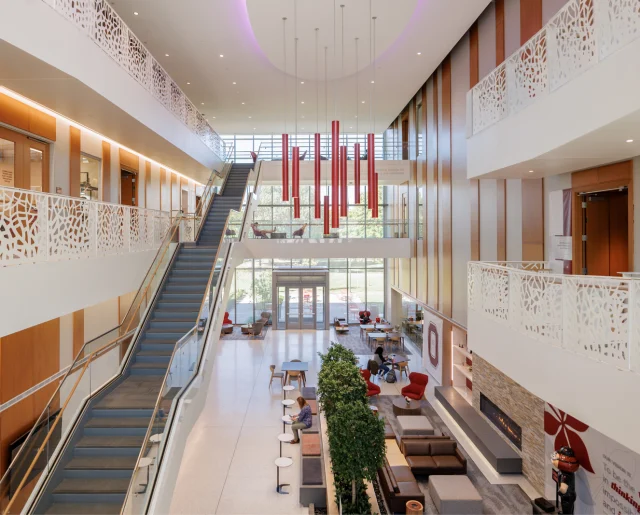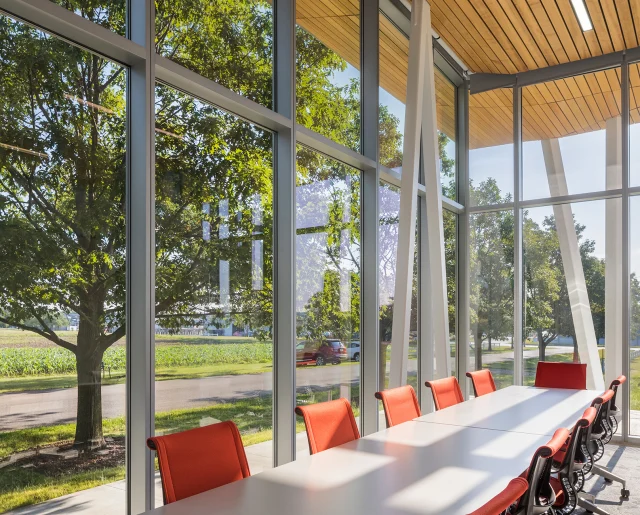Flipping the Script on Healthcare Design to Address the Needs of Caregivers
It is widely understood that we are facing very critical issues within our healthcare system in the United States. We are all too accustomed to hearing about the rising cost of healthcare and have become overtly aware of the impact that our society has had on issues such as health equity across our nation. We are only starting to understand how climate change could affect just about everything in our life in the years to come. But if you ask most healthcare administrators what keeps them awake at night, you will most likely hear their number one concern is regarding their healthcare staffing.

Current estimates indicate that our country will experience a shortage of at least 120,000 physicians by 2032, and require more than 200,000 nurses in each of the next 3 years to meet projected needs. Caregivers at all levels within our healthcare systems are facing extreme pressure, with as much as 75% of the caregivers surveyed indicating they are more stressed than at any other time in their career and feel physically, mentally, and emotionally burned out. This comes at a time when fewer caregivers are entering the healthcare workforce while more caregivers than ever are leaving healthcare.
There are many influences that have created these stresses for healthcare providers, and while attention to healthcare design cannot fix all of the problems associated with these staffing challenges, there are certainly many impacts that design can have to help address the situation. In order to leverage the power of great design, we should consider two different categories: 1) environments that create stress, and 2) environments to help alleviate stress.
Historically, healthcare settings have not been seen as comfortable places. Hospitals are often filled with the sounds of medical devices and alarms, have certain smells that are only experienced in hospitals, and cluttered with medical equipment and devices. Much attention has been given to the patient environment to create “healing environments”, and more recently designed hospitals are in fact much quieter, provide comfortable settings for patients and their families, and give patients a certain level of control over aspects of their rooms such as lighting and temperature. On the other hand, it is questionable whether as much attention has been given to the places and spaces where caregivers work.

Environments that Create Stress
Caring for patients is a demanding role, and one that can be both physically and mentally draining. Too often, the design of a department doesn’t do enough to support the needs of the caregivers, with centralized equipment storage, centralized clean and soiled supply storage, and centralized nursing stations. While efficient for the hospital, centralization of these required spaces creates longer travel distances for caregivers when they need certain supplies, or even just when they need to check on their patients.
The ever-increasing amount of technology in hospitals has definite advantages in how patients are able to be monitored, and does result in a higher level of care for patients. However the introduction of more monitoring and computer screens requires design thought about where these devices are located and how to prevent complete overload of information for those providing care. Additionally, new communication devices require that caregivers are “always available”, and staffing levels often don’t allow caregivers to take very necessary breaks.
Caregiver spaces also tend to be more internal within the footprint of a hospital, and as a result they are often smaller than they should be, are not as comfortable as they might be, and do not have access to natural light and views of nature. These are important spaces for caregivers to get away from the high-paced nature of their role to relax, reset, and recharge. The physical and mental challenges of working in a healthcare environment and caring for patients, and especially now with the added challenge of inadequate staffing has resulted in an increase in workplace errors, which contributes to yet another stressor – emotional exhaustion. Emotional exhaustion can include feelings of anxiety, inability, and even depression when the weight of stress and guilt from ineffectiveness or errors becomes too great to bear.

Photo of staff break room in Adena Ortho and Spine Institute with abundant daylight and some of the best views from the hospital. Caregiver amenity spaces within the hospital not only include break rooms for eating a meal but also respite rooms and spaces for exercise.
Environments that Alleviate Stress
Spaces for caregivers are just as important as spaces for patients and families. Without caregivers, hospitals are not able to accept and provide care for their patients, and in fact, we have seen far too many hospitals closing departments and no longer providing certain types of care because they are not able to effectively staff those areas.
As healthcare designers, we need to focus just as much attention on the caregiver spaces as we do the patient spaces. Caregivers deserve access to a variety of spaces that can meet the needs of each person and many situations. These spaces may include a more intimate and secluded respite space where people are able to separate themselves from the stresses of their roles for a short while, or comfortable spaces with appropriate amenities where people are able to interact and support each other in groups.
More attention also needs to be given to the spaces where caregivers do their jobs to make certain that they are comfortable, that they have access to natural light and views, that they are designed for the needs of the caregivers, and that they have appropriate control over their surroundings. Caregivers should be granted a level of control over their environment to address things such as temperature, lighting levels and sound levels, as such changes can have a significant impact on each individual and their ability to control their own stress levels.
Finally, the caregiver environment is more than just the physical environment. It also includes their cultural environment. We need to provide for a culture where caregivers are encouraged to take breaks, to get offstage and recharge, where they are able to have a voice about the challenges they face, and where they can make recommendations on how to provide a higher level of care. Our caregivers are the front line people who take care of those who are also in stressful and sometimes desperate situations, and are often the people who have the best perspective on how to address these situations.

Moving forward
There are many issues that need to be addressed today to provide the level of healthcare that we have come to expect. Many financial, operational, educational, and physical challenges need to be addressed, but most of all, we need to support caregivers who have the passion and knowledge to care for patients and families with healthcare needs. We are not going to solve all of these challenges overnight, but we need to start with designing for our caregivers, providing for their needs as well as considering the caregivers of the future.















